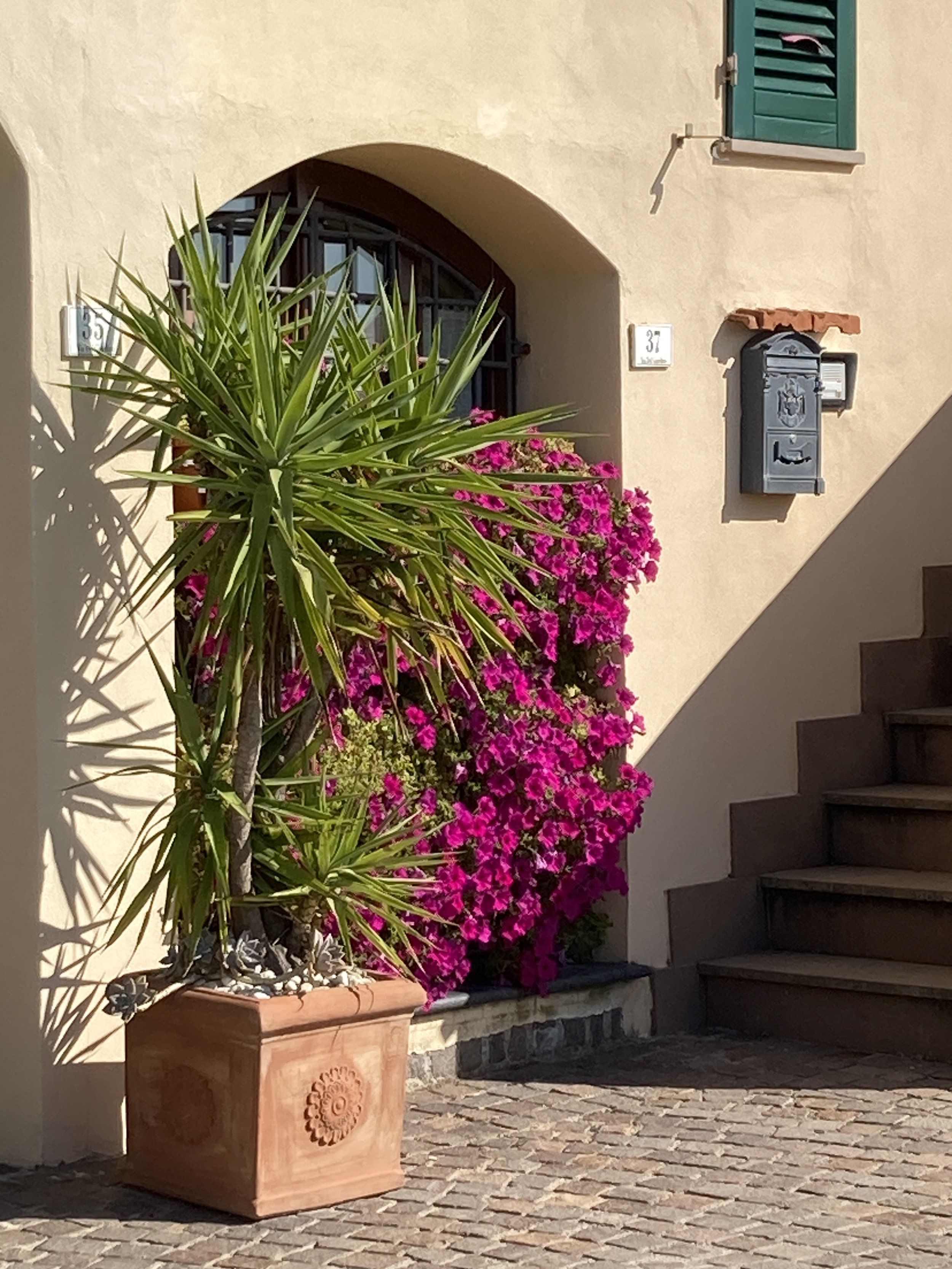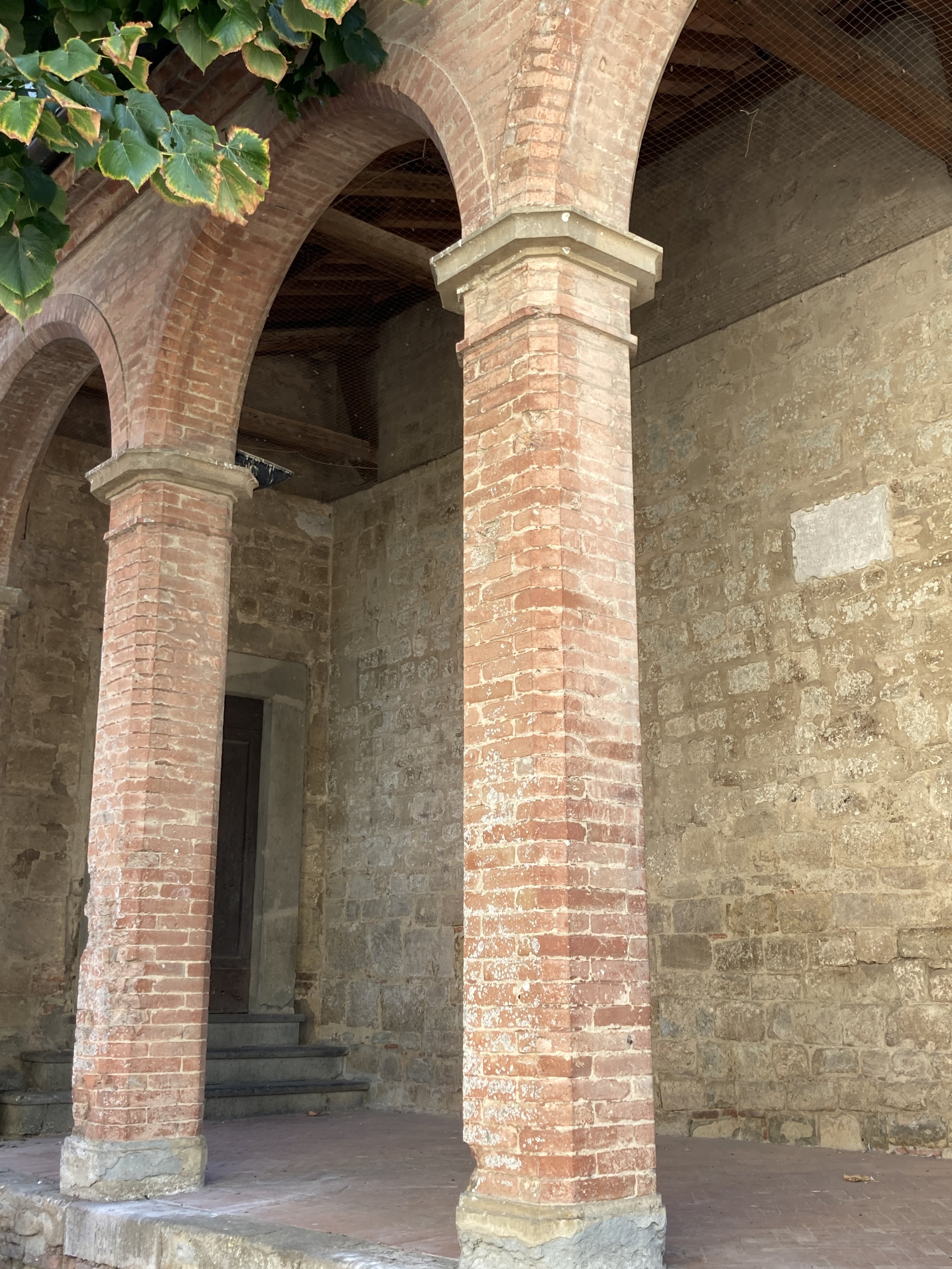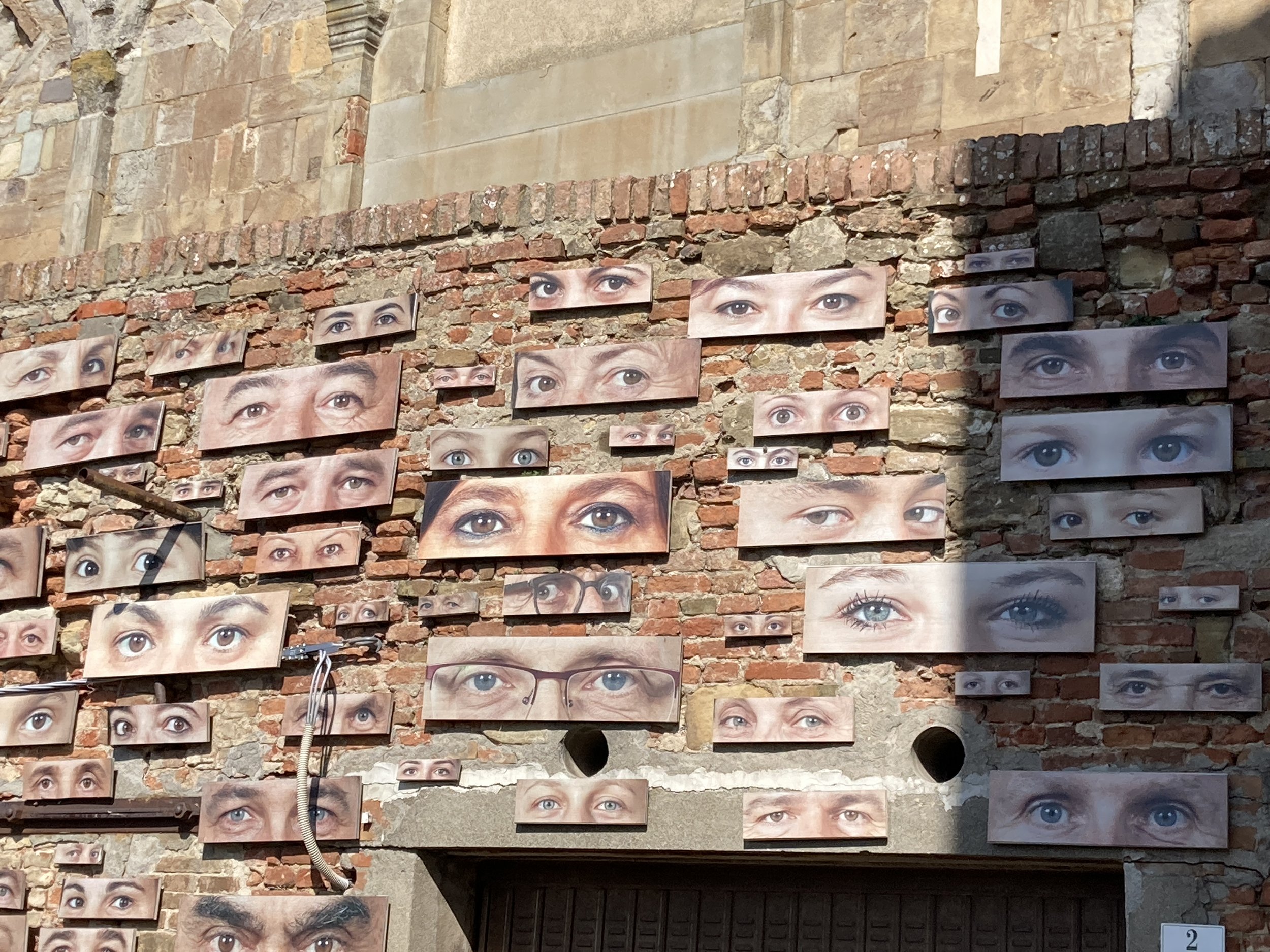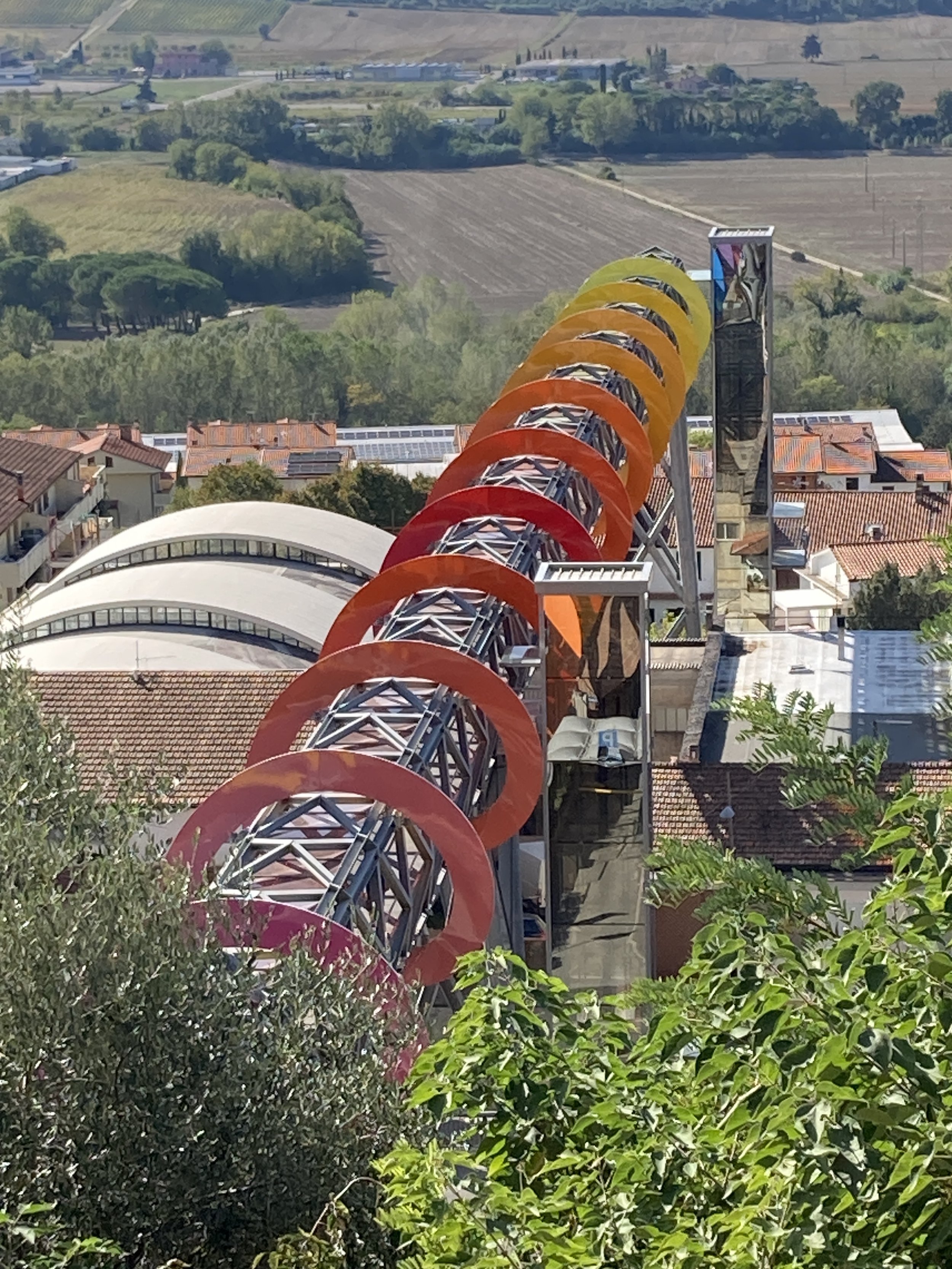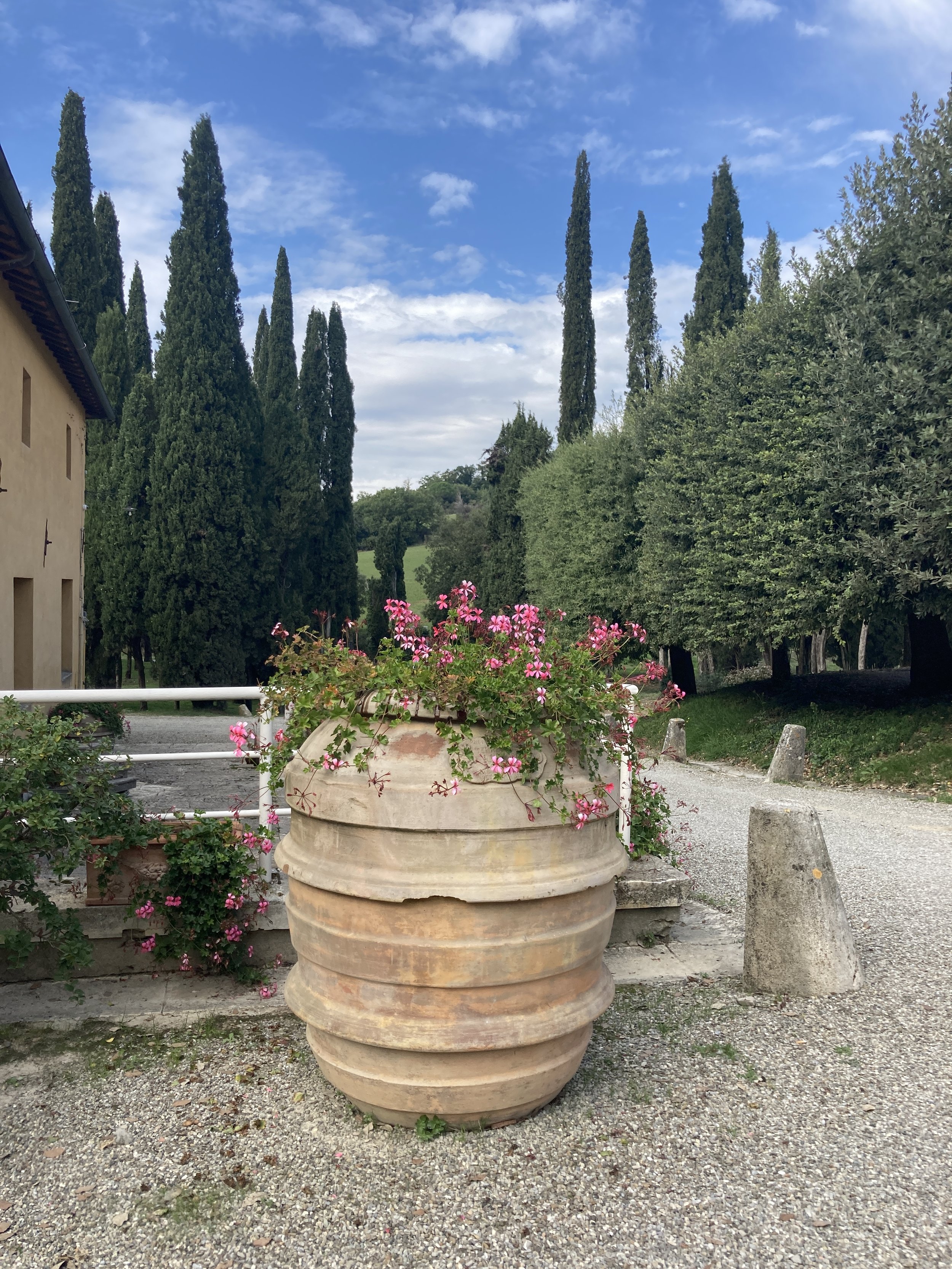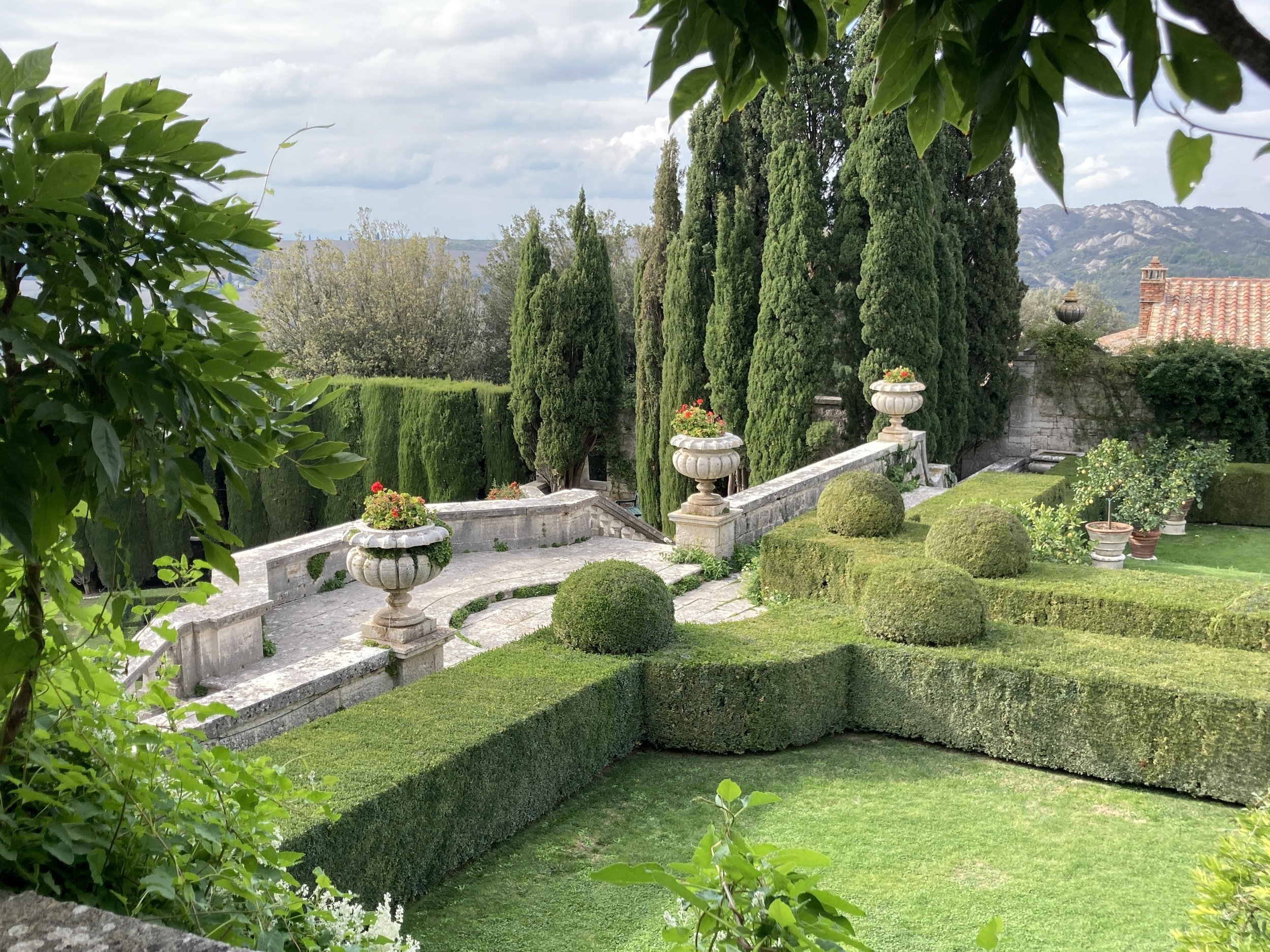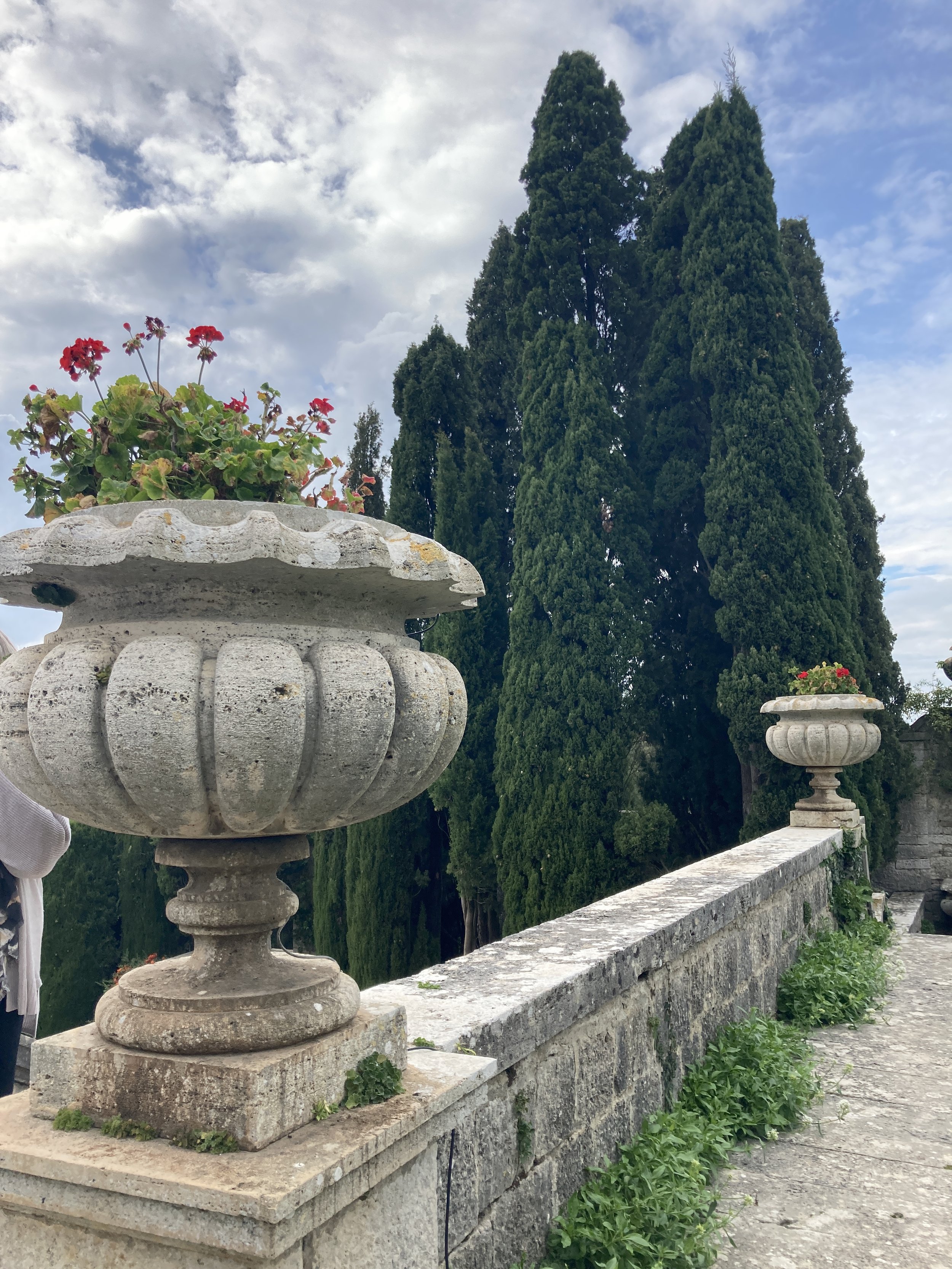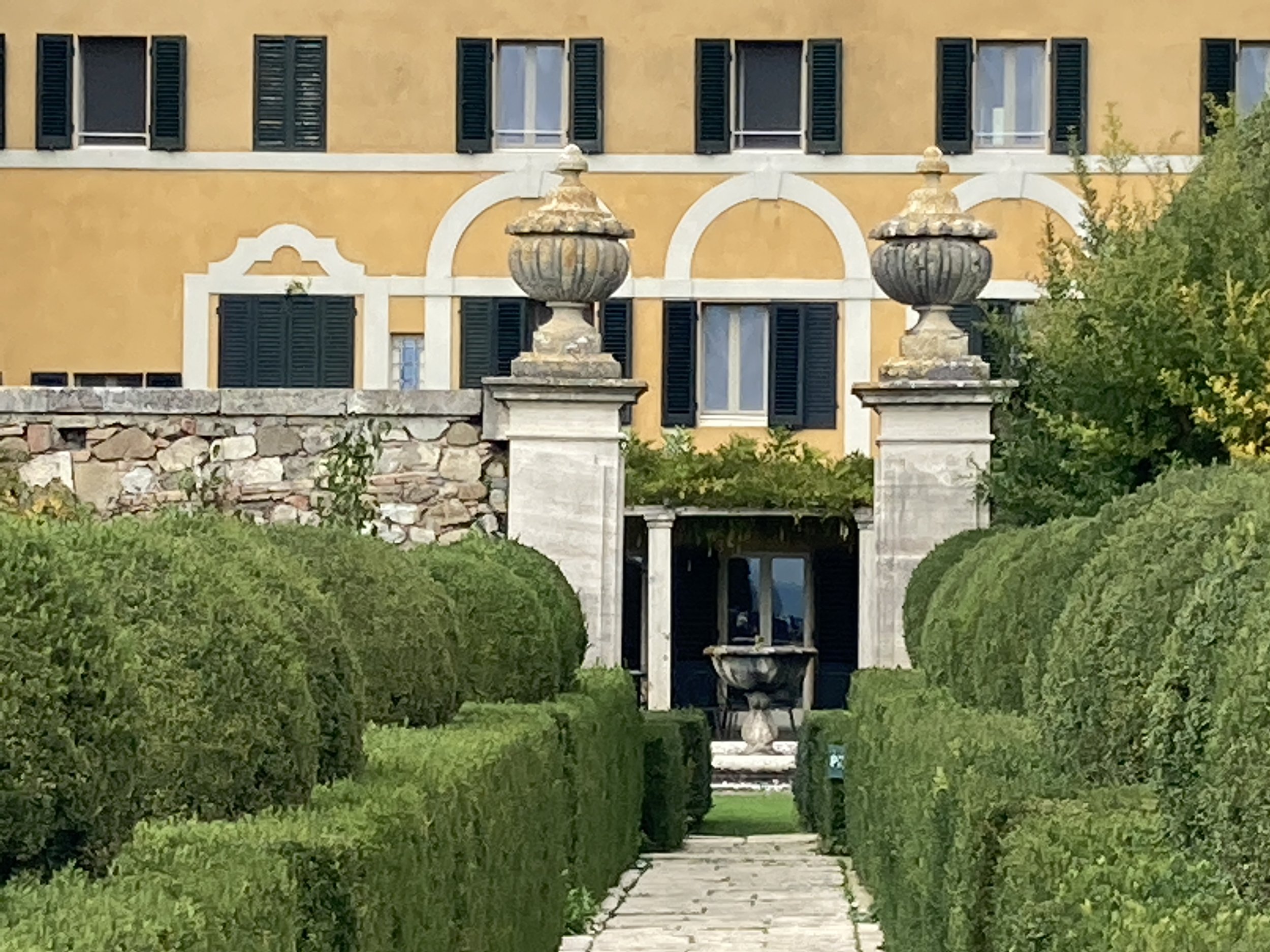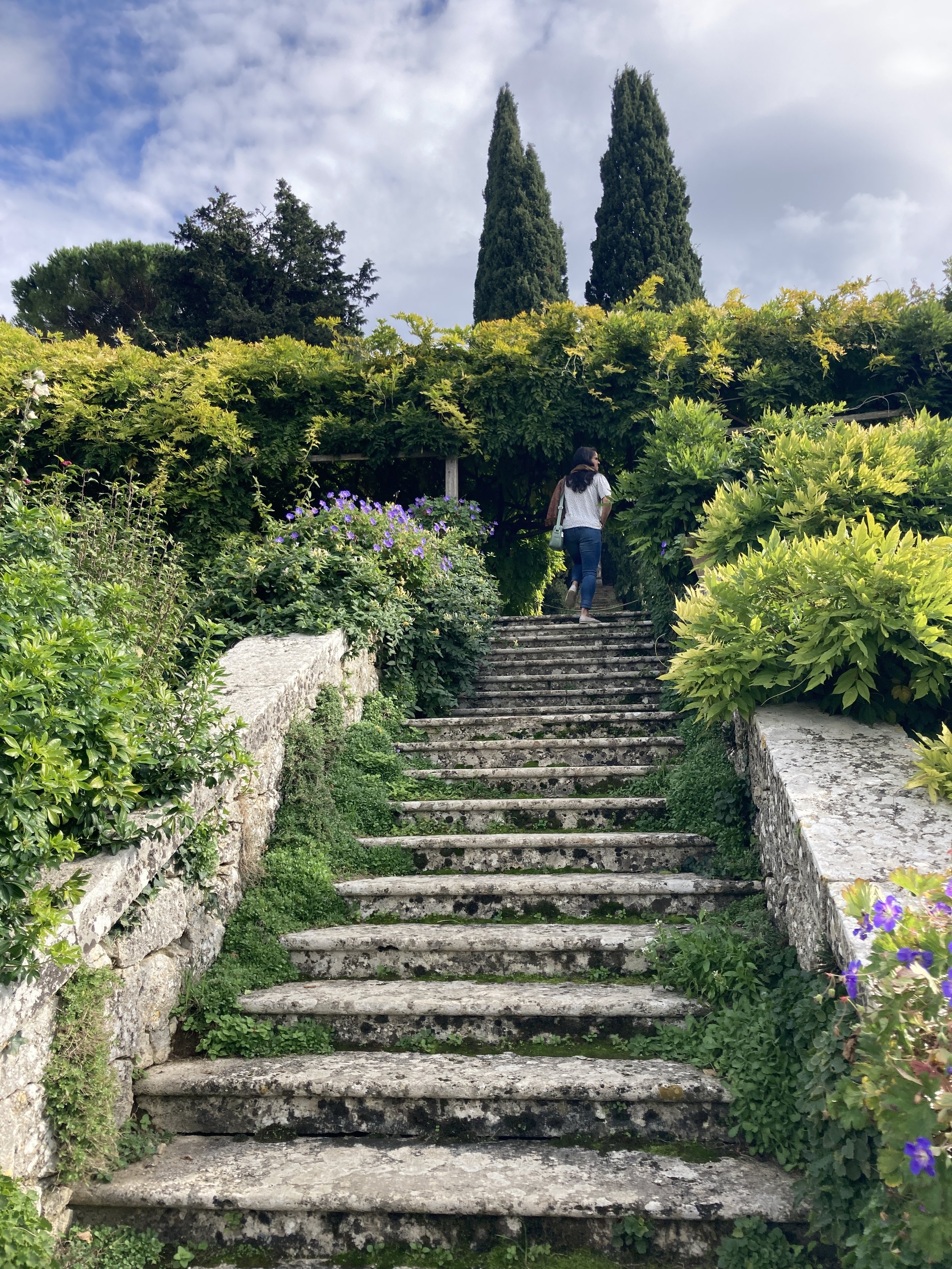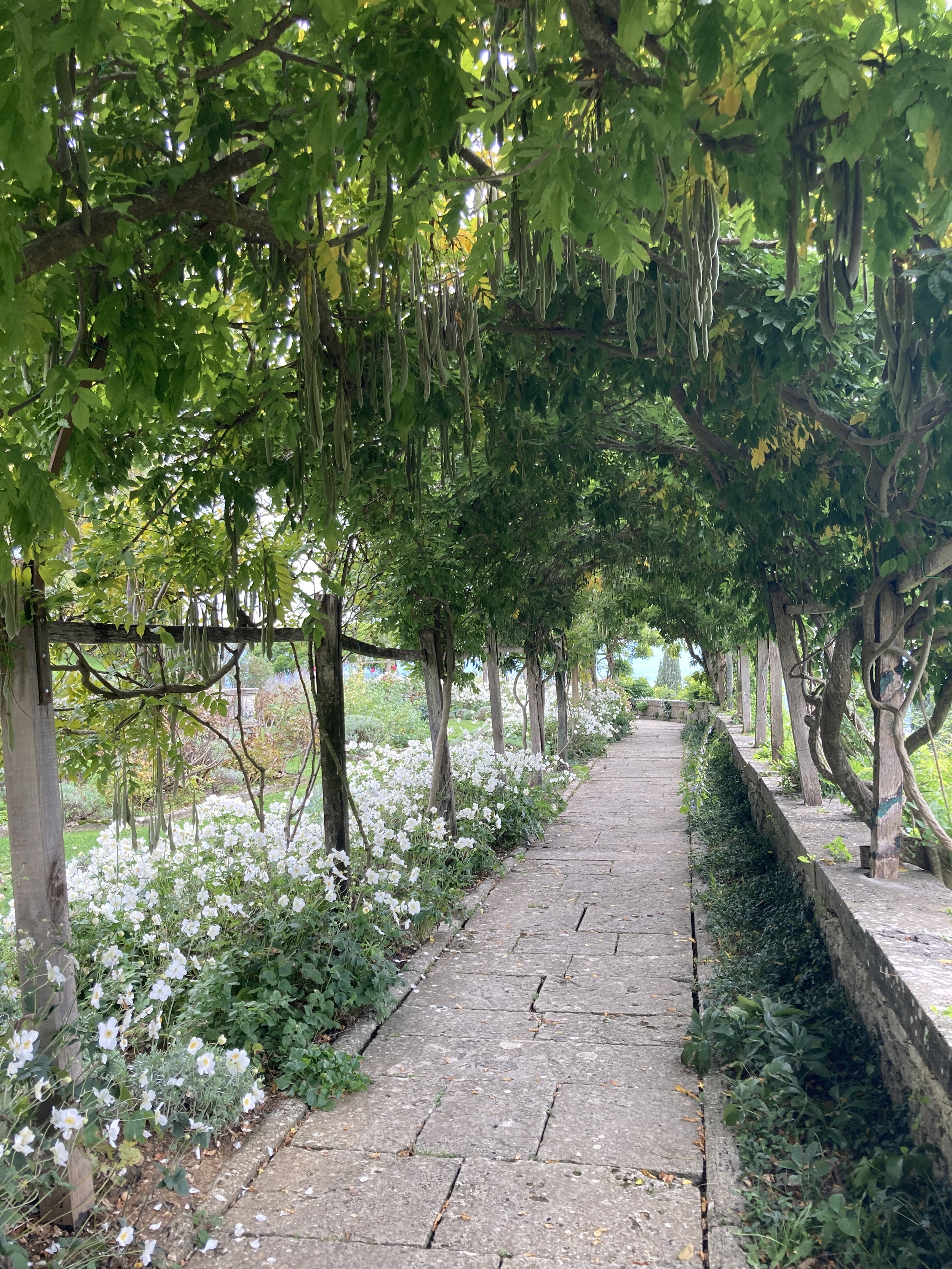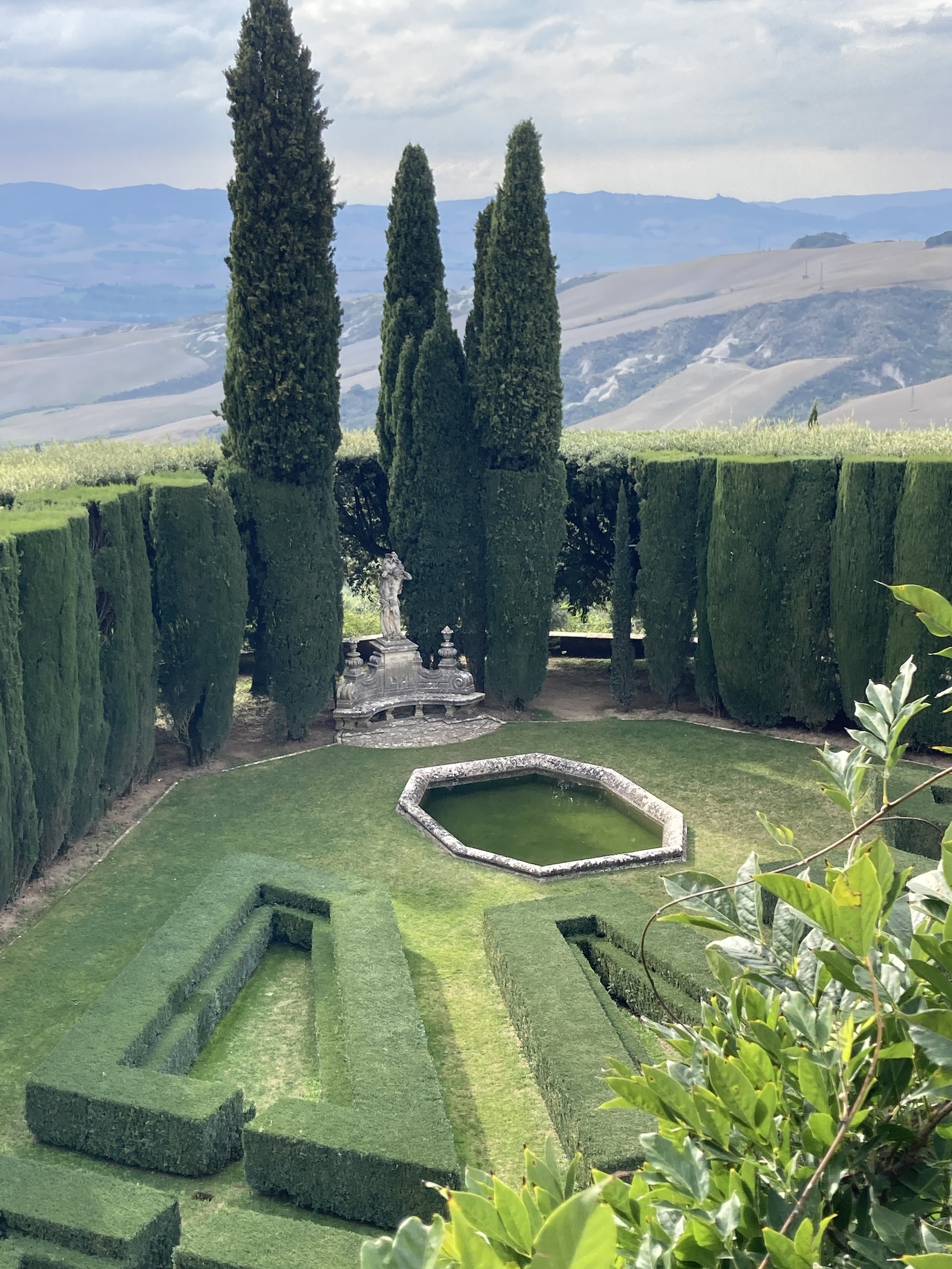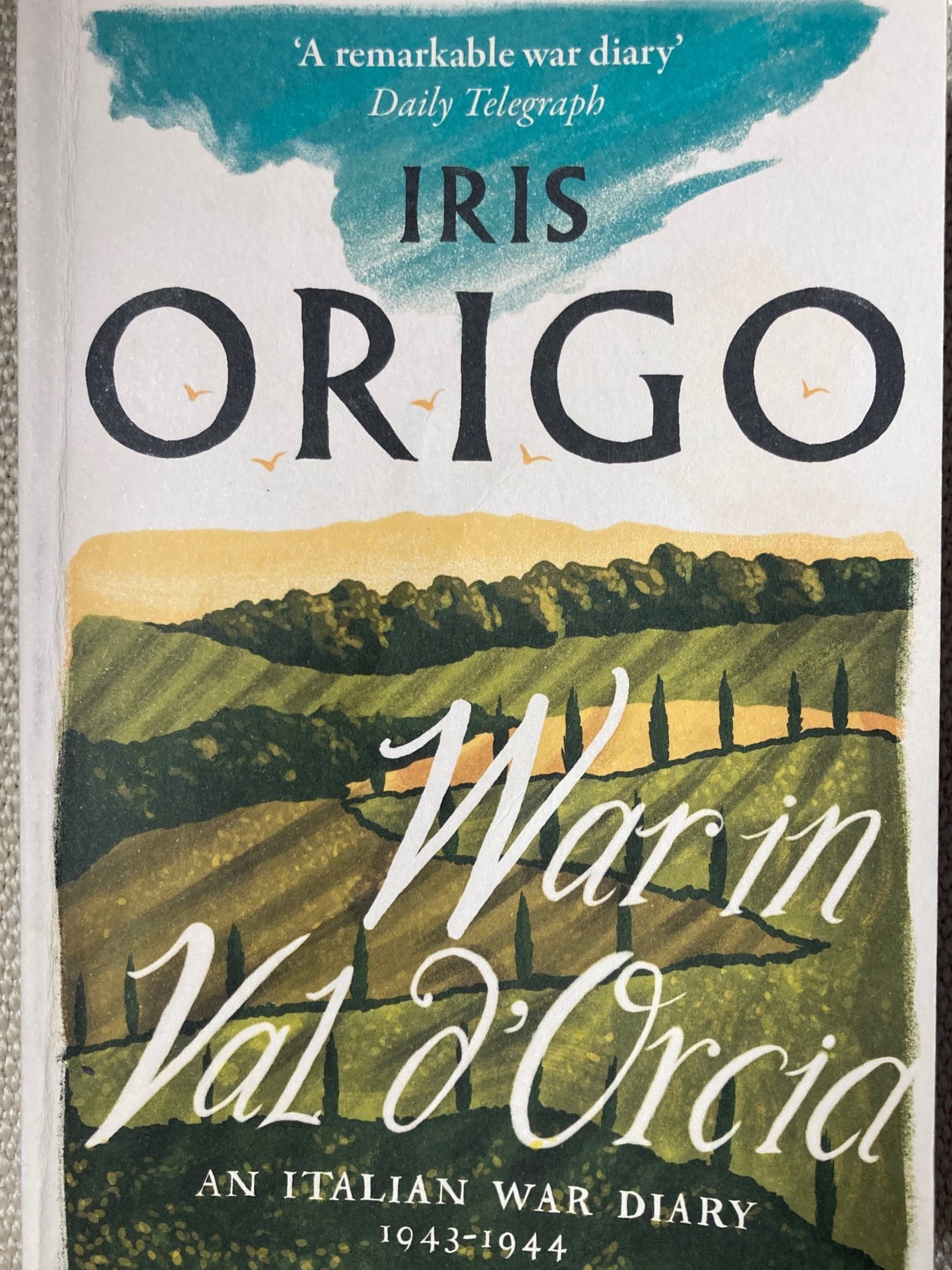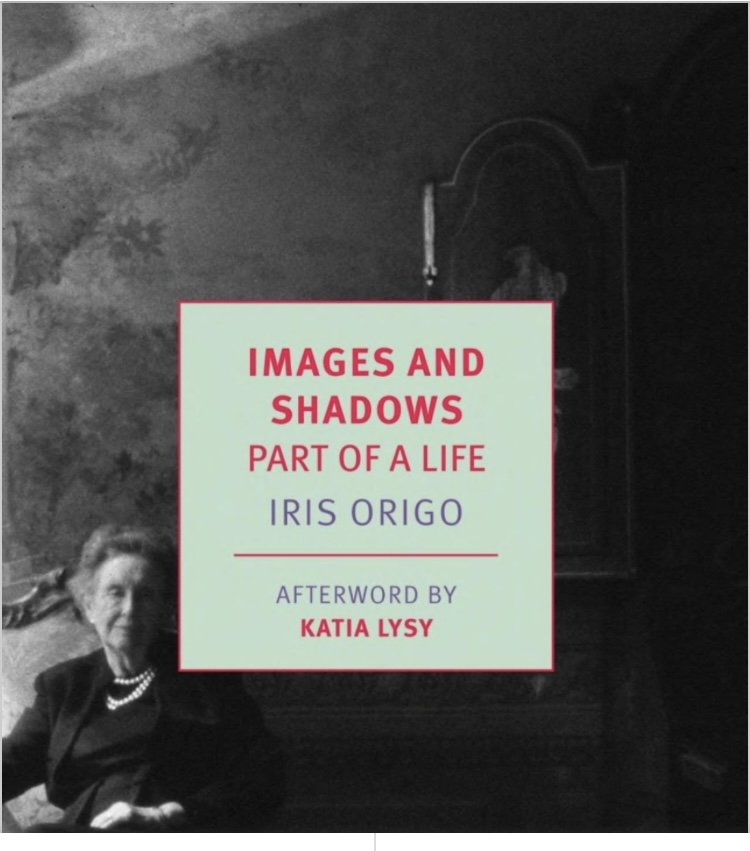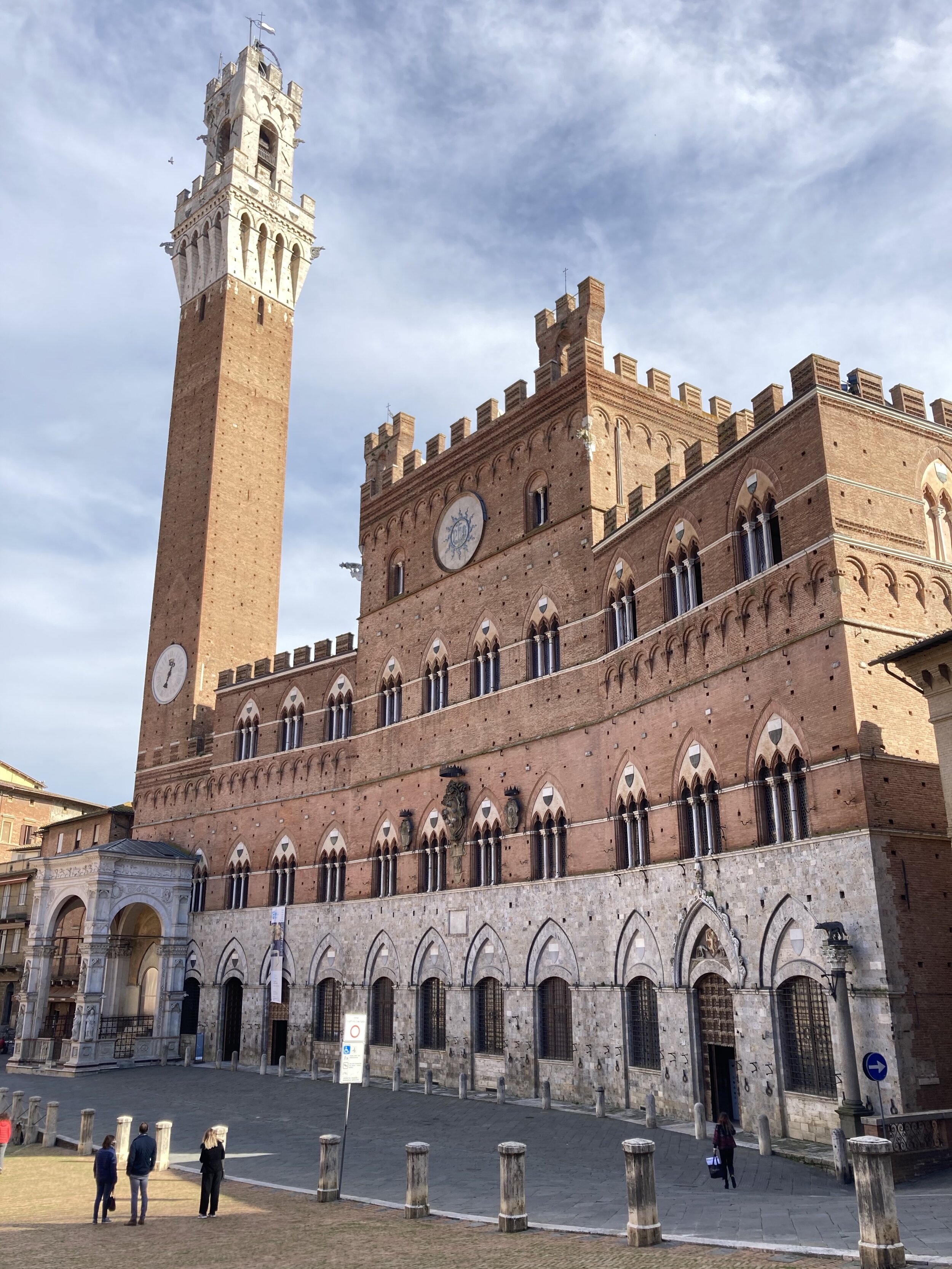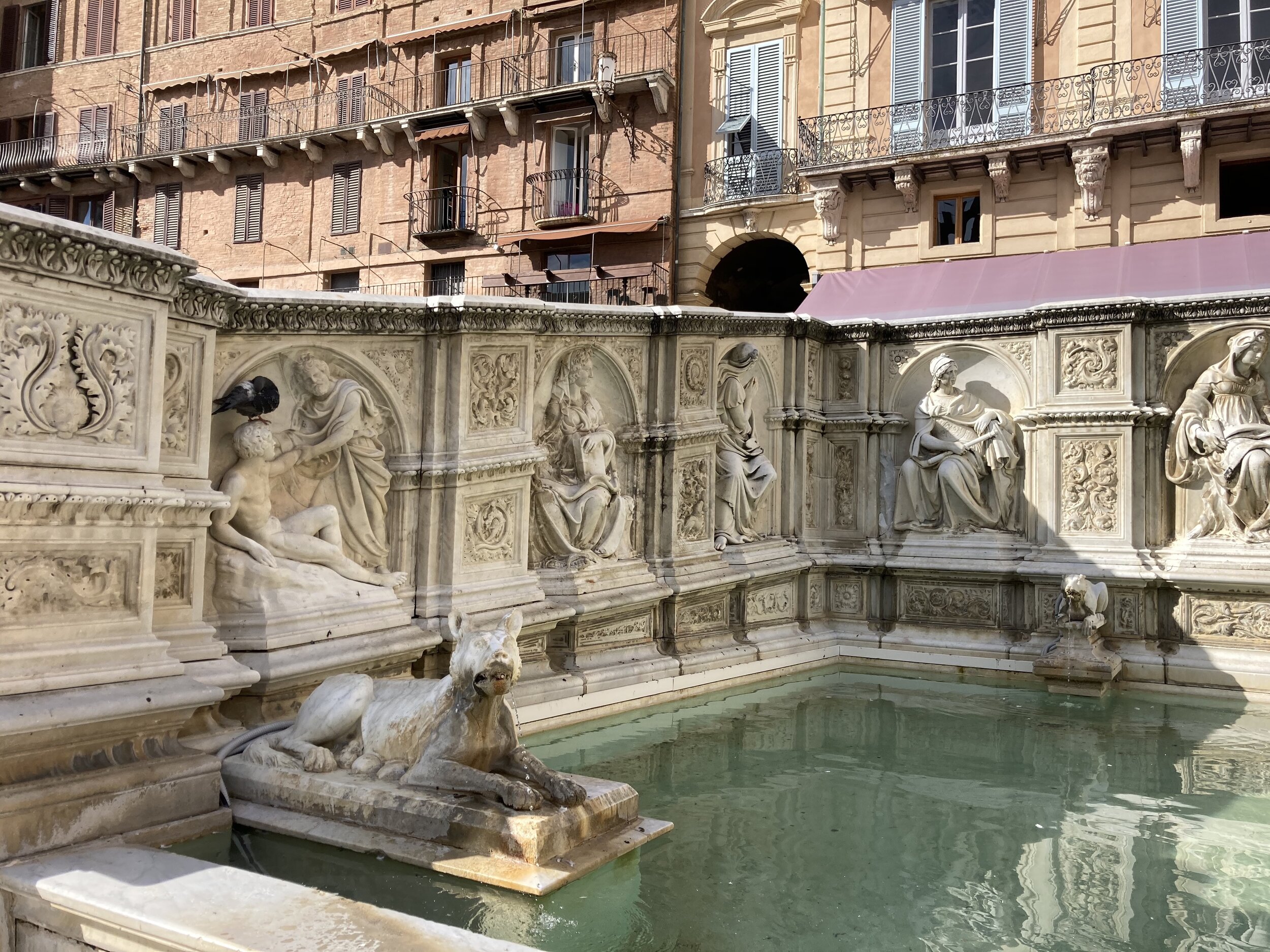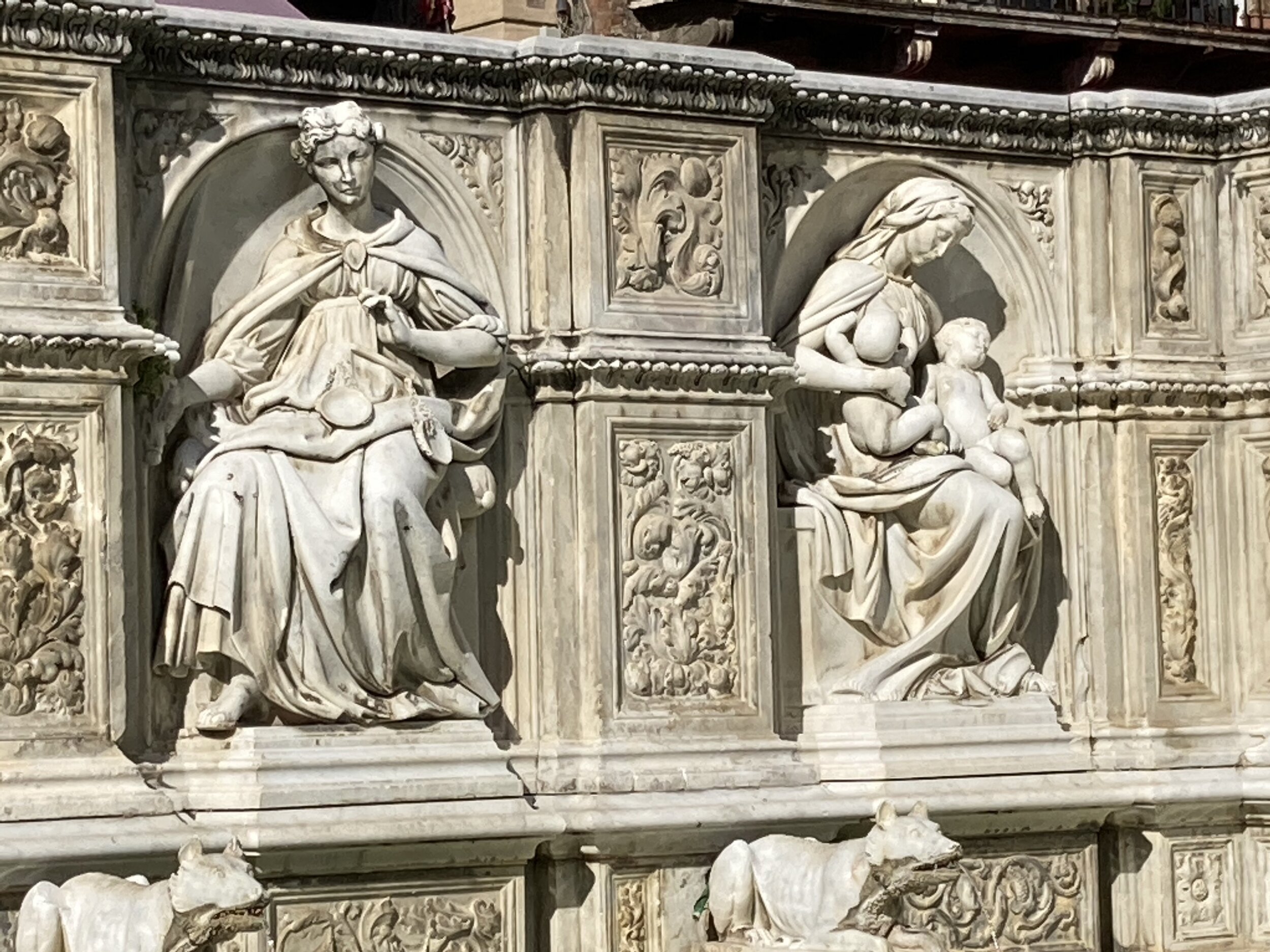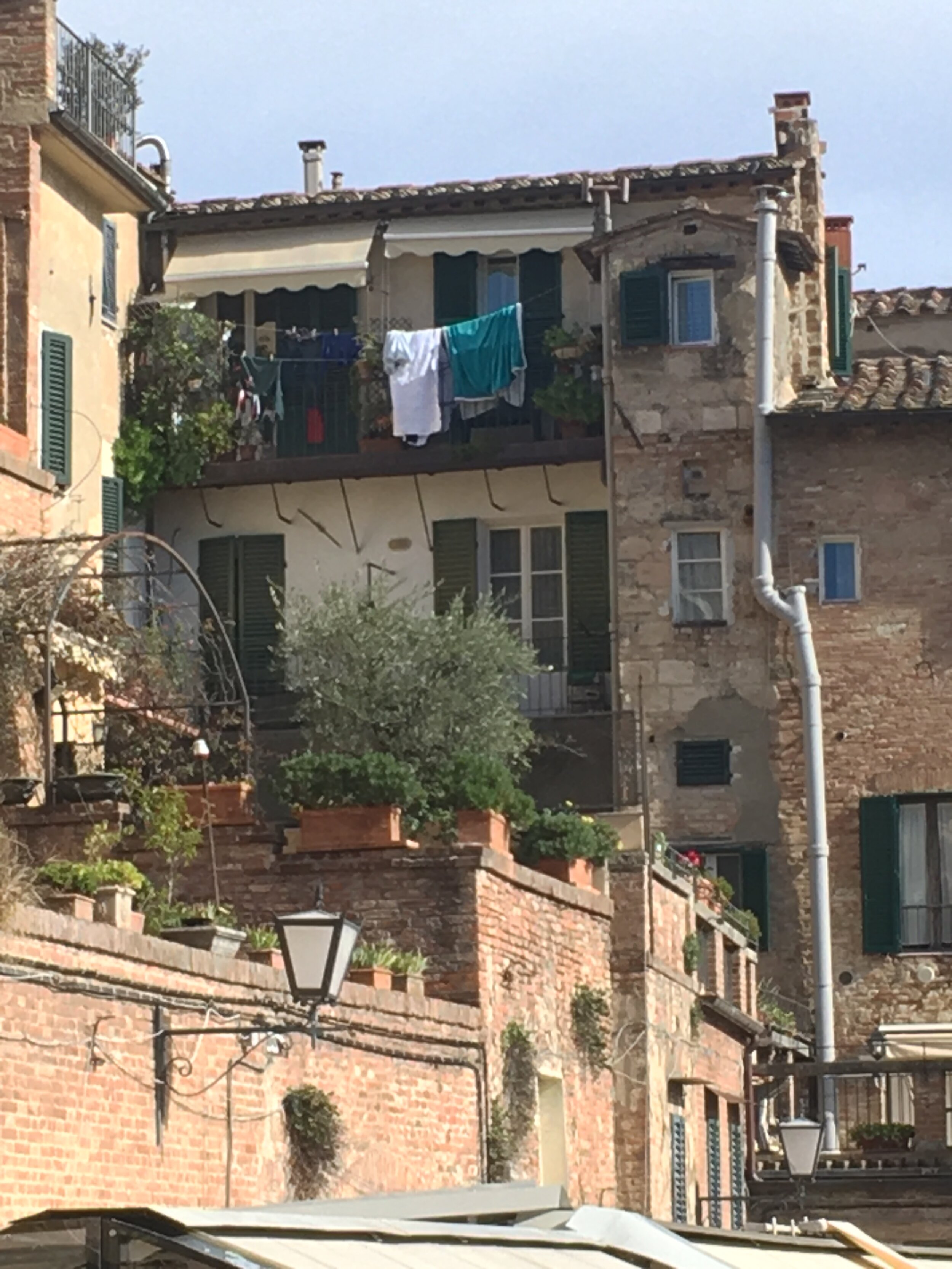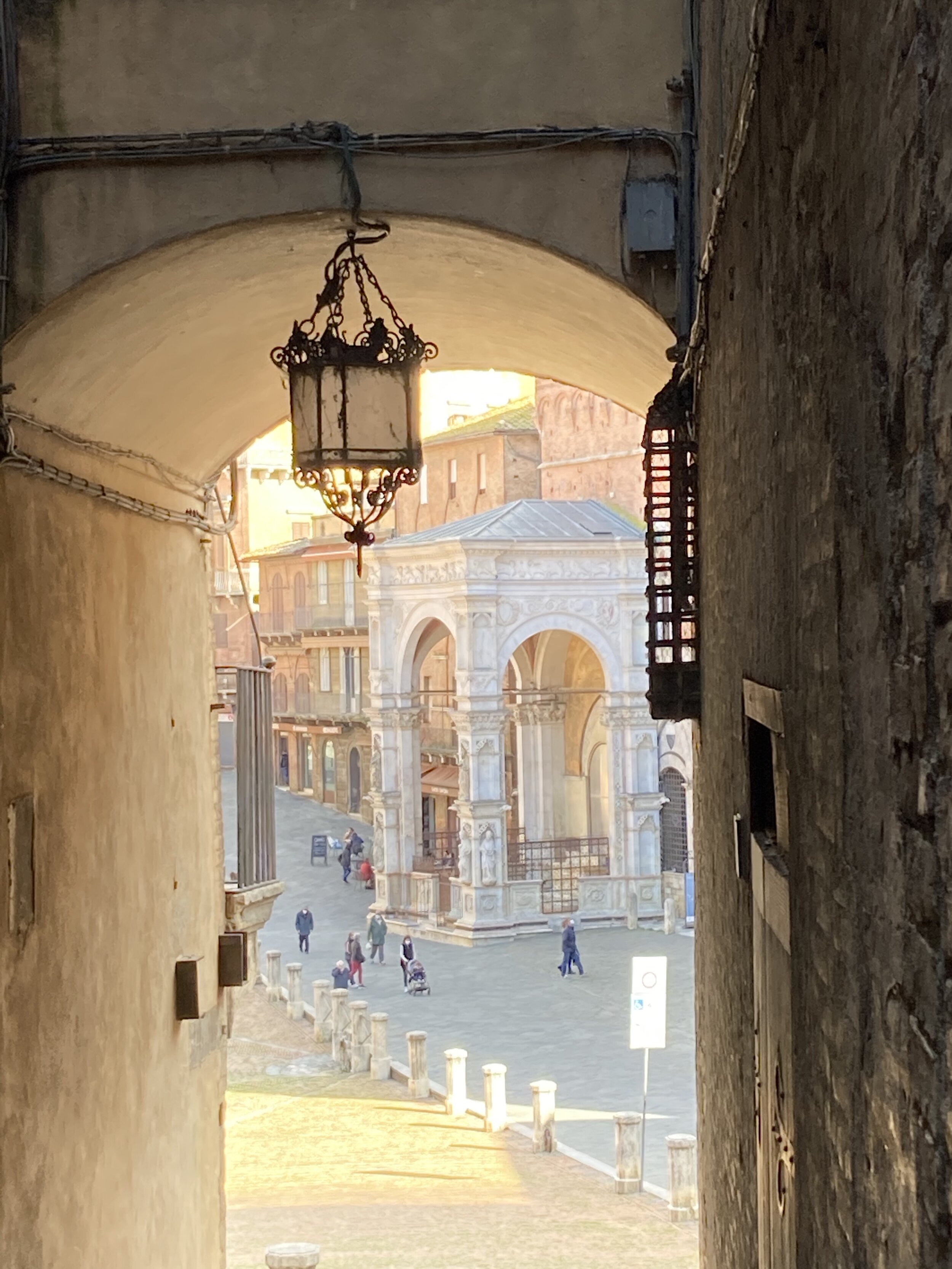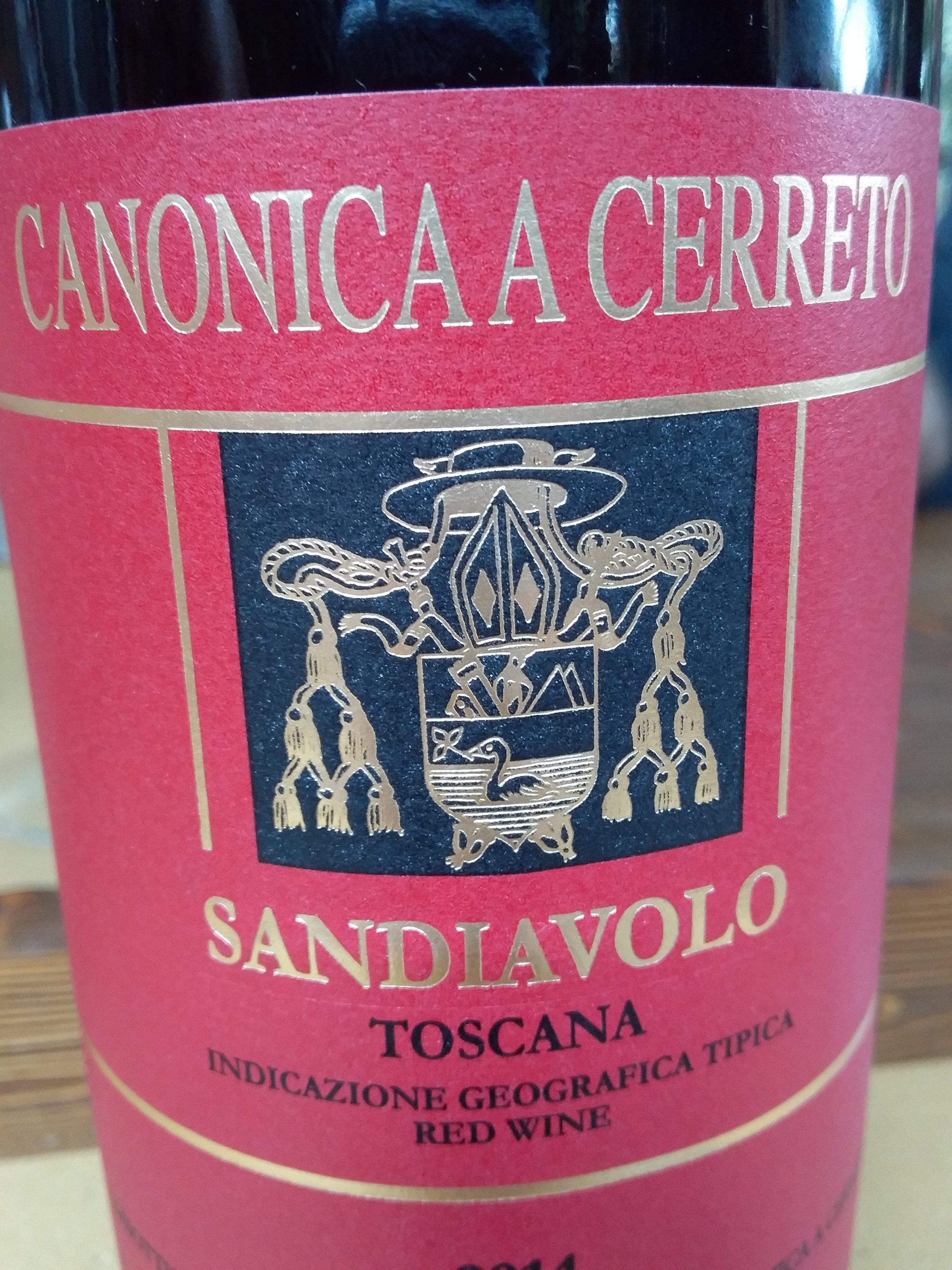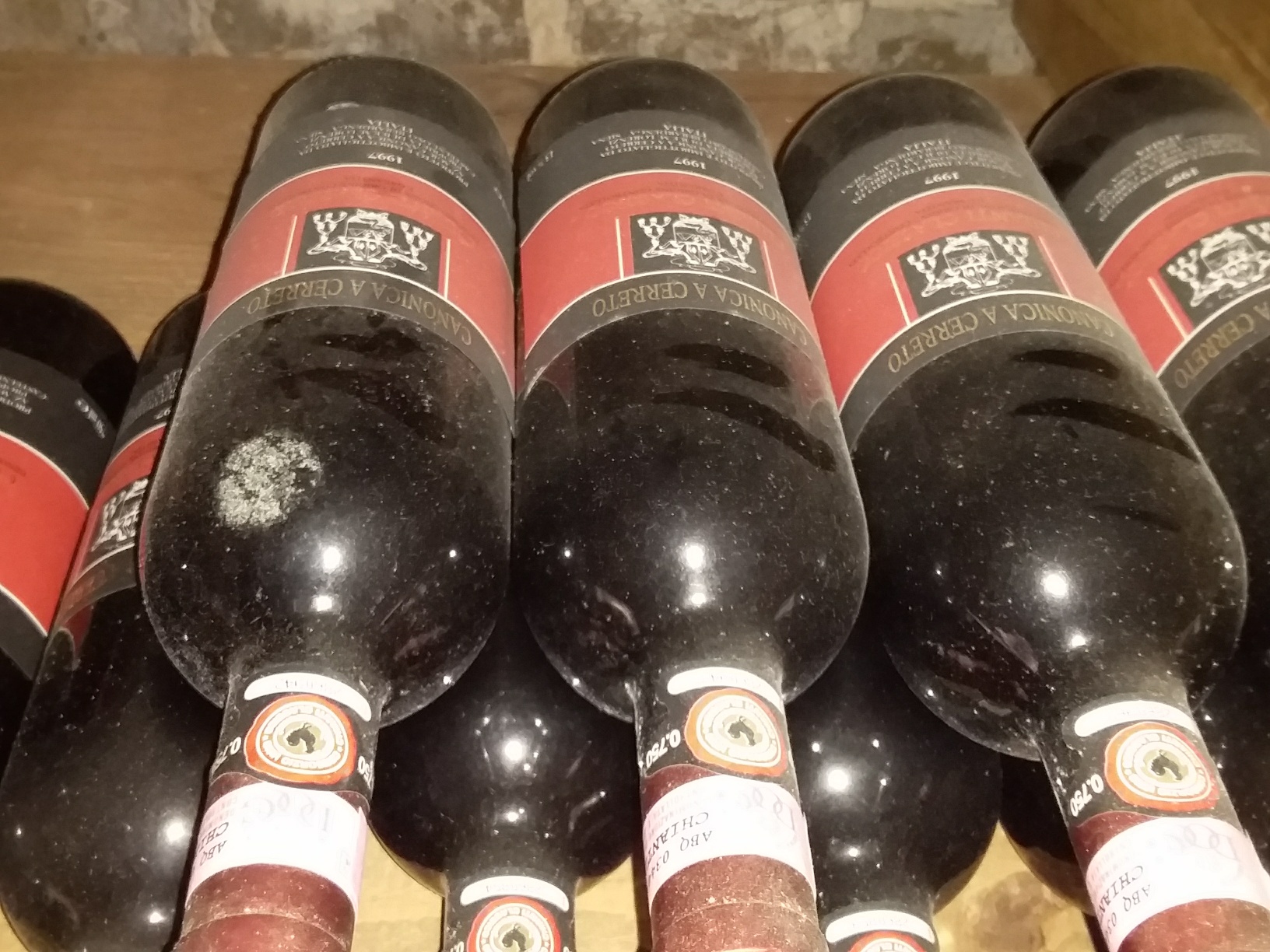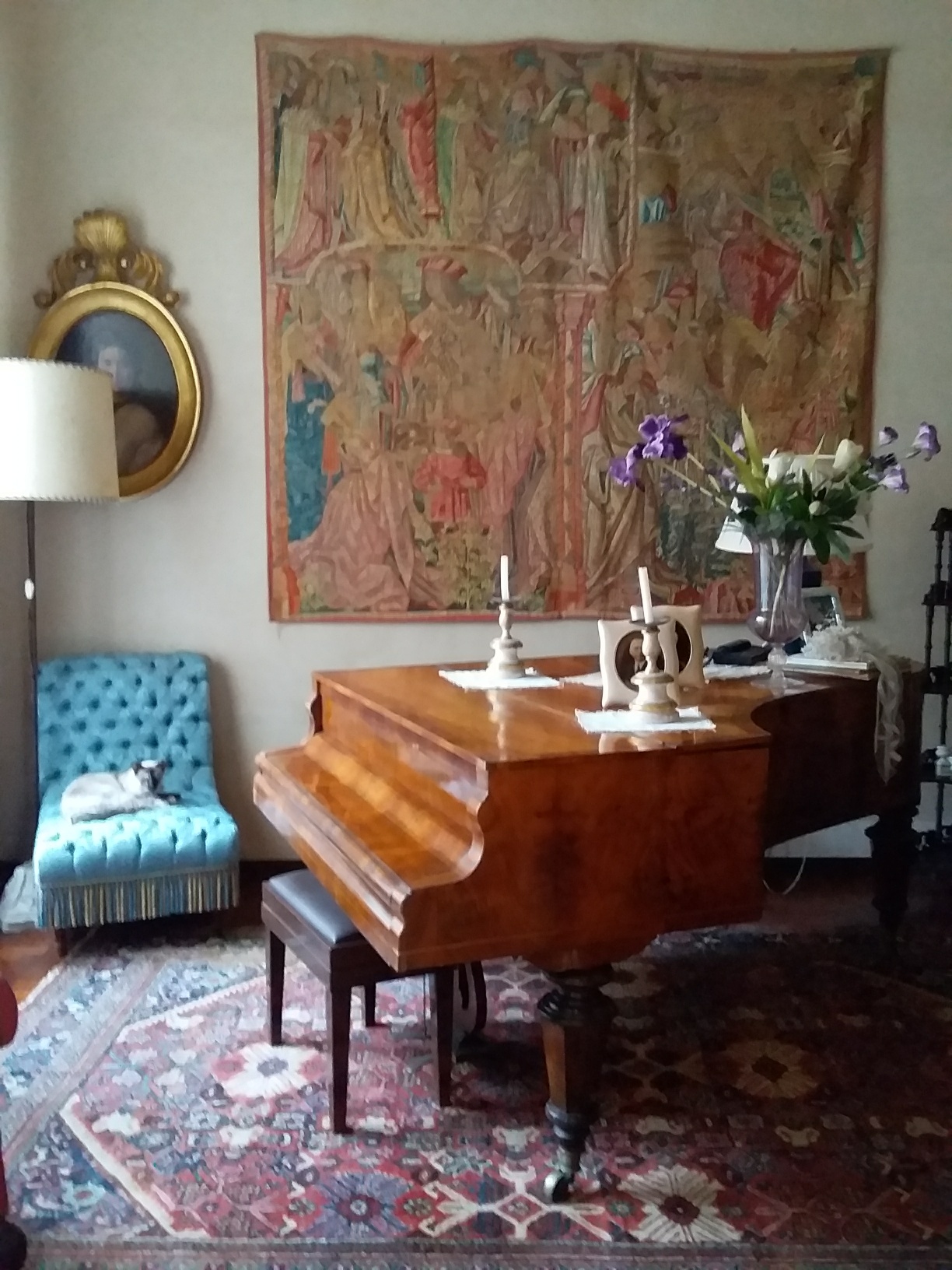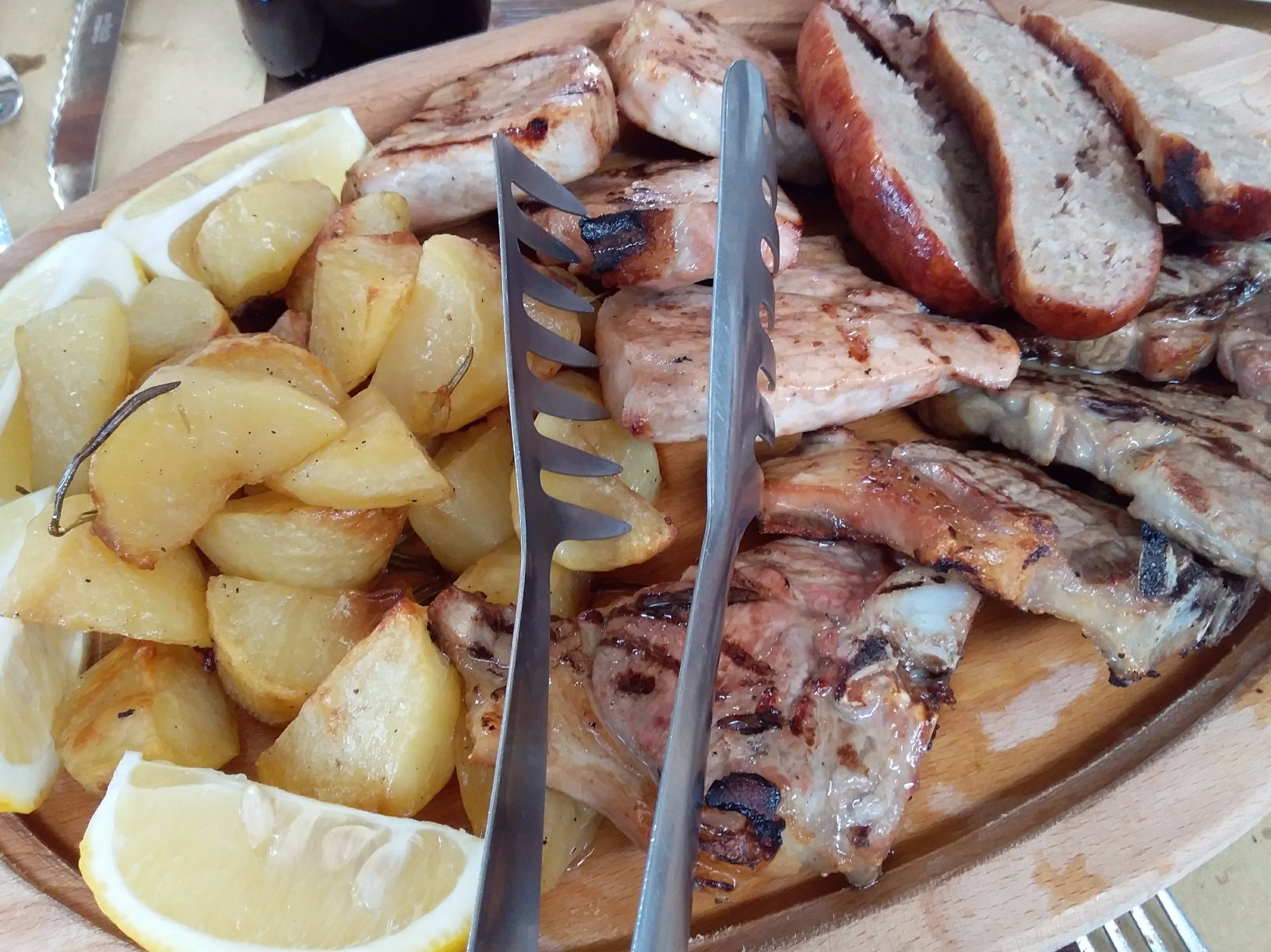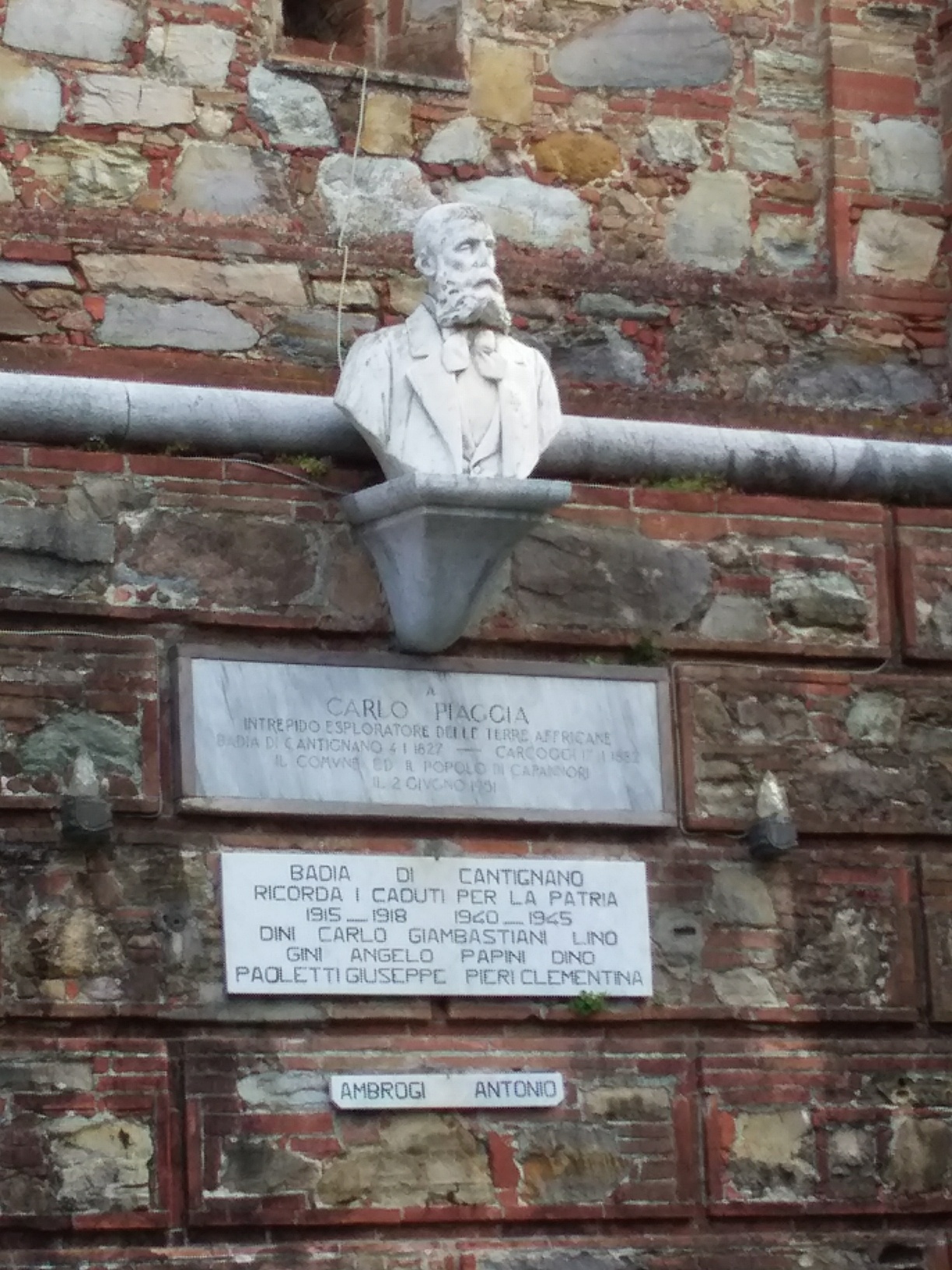A Walk Through Peccioli
Tuscany is dotted with hill towns, including several that are close enough to visit as a day trip from my home base in Lucca. Barga and Montecatini Alto are easily reachable by train or bus. Others, including Montecarlo, Collodi, Volterra, and San Gimignano, are an easy car ride away. I’ve been lucky to spend time in each over the years I’ve been in Lucca but there are still so many hill towns left for me to explore!
On a recent outing, arranged by The Tuscan Wanderer, we drove through the Valdera, the Valley of the Era River, as we returned to Lucca after a visit to a winery in the town of Terricciola. This is not a region that I’ve visited before, and it requires a car, so I was pleased to join this group adventure.
Peccioli, viewed from the modern terrace suspended over the edge of town.
The Era River runs between Volterra and Pontedera in the Province of Pisa. At Pontedera the Era joins the river Arno as it flows towards the sea. High above the river valley lies the small hilltop village of Peccioli, easily spotted from a distance by the tall bell tower of its church. How fortunate that this little hill town was one of our destinations!
Peccioli’s most recognizable landmark, the campanile of the church of San Verano, can be seen from a distance down in the valley.
Peccioli, like so many of Tuscany’s hill towns, has a Medieval layout and a long history of territorial wars as Pisa and Florence battled for control of the town. Built in the 11th century around a now ruined castle, Peccioli has an historic center with a central piazza, an ancient church, and a series of narrow streets and small alleys.
Like most hill towns, there are great views. In Peccioli the vistas are down to the valley from one side of town and out onto Tuscan hillsides and farmland from the other side. But much as Peccioli has in common with other Tuscan hill towns, it also has its own unique character.
What gives Peccioli its special flavor is the series of contemporary art installations found throughout town.
Artists from around the world have created works of art and architecture specifically designed for display in Peccioli. The contrast between the ancient and the modern is intriguing and lots of fun.
Throughout town are old doors, ancient brick structures, and houses fronted by pretty flowerpots mixed in with the more contemporary art pieces.
Along an old brick wall are hundreds of photos of eyes, an installation called the Squardo di Peccioli. The artist, Vittorio Corsini, photographed the eyes of Peccioli’s residents for his work.
A sky bridge connects the historic center with an elevator down to the newer parts of town below in the valley. Titled Endless Sunset, the work by Patrick Tuttofuoco spirals around the walkway with a ribbon of color. It turns what might be an ordinary bridge into a work of art.
A large terrace designed by architect Mario Cuninella juts out from the edge of town, giving long views to the farmland and hills surrounding the town – a classic Tuscan view.
Our time in Piccioli was brief, a short detour on the drive between Terricciola and Lucca. There are many more art installations to explore, museums to visit, and an historic center with shops and cafes in which to linger. I am looking forward to a return visit.






